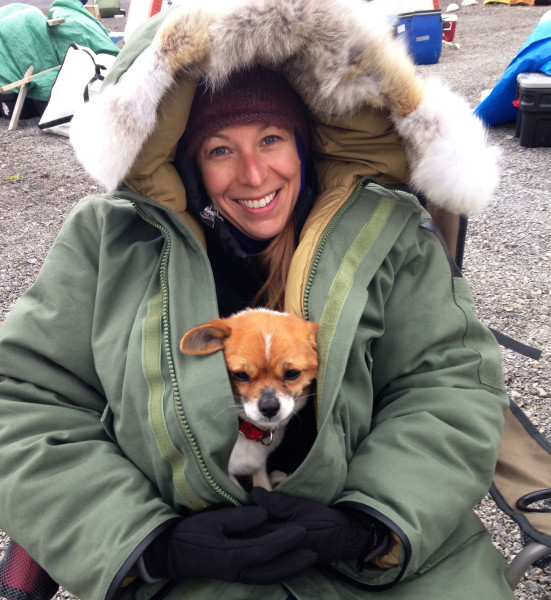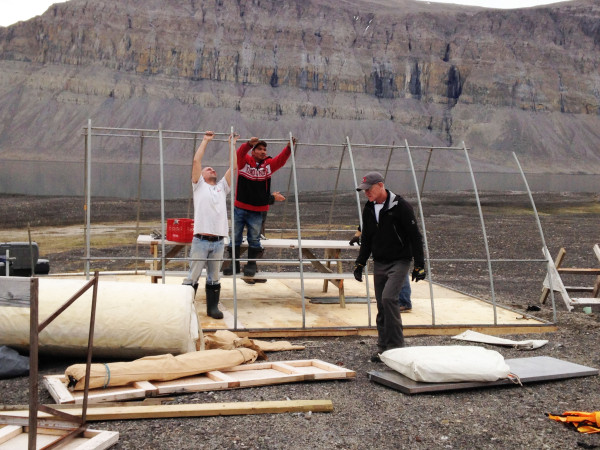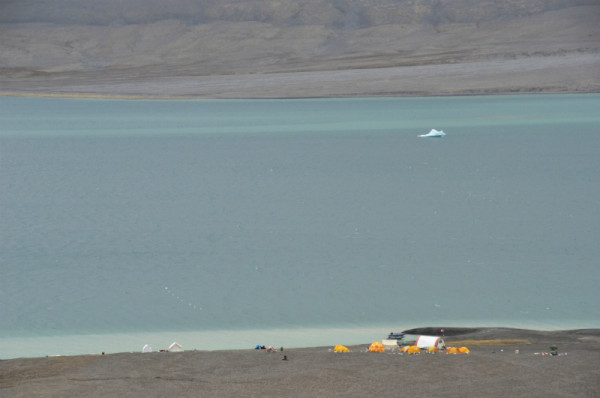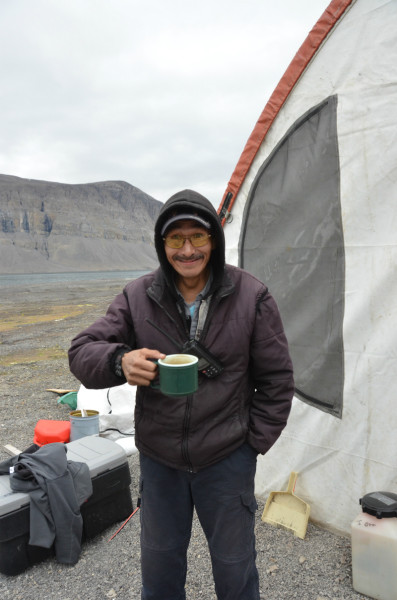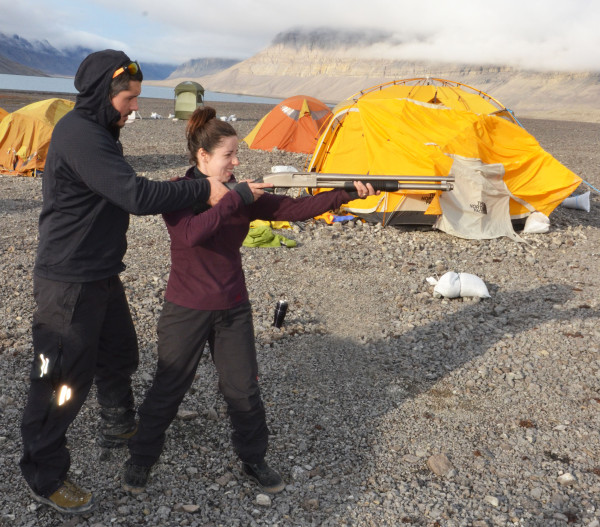Chasing narwhal: What I learned in the Arctic
Last August, WWF’s Jacqueline Nunes joined a research expedition to Ellesmere Island to study narwhal, the “unicorns of the sea.” Read about her journey throughout Polar Bear Week. (Read the whole series here.)
Lesson #1. How to stay warm
Perhaps not the right time to admit this (given that Toronto is locked in a brutal cold spell right now) but I love winter. I wasn’t always this way—growing up, I hated being cold and mostly avoided going outside from November to March. What made all the difference was learning how to layer my clothing. Camping for three weeks in below-zero Arctic temperatures, I used trial-and-error to hone my layering system. I figured out what works best for my body—what keeps me warmest when sitting still, being active and sleeping in a tent.
Lesson #2. How incredibly difficult Arctic research can be.
You travel thousands of kilometres, lug hundreds of pounds of gear, and build a camp in the middle of nowhere. You lift hundreds of shovelfuls of gravel to level campsites, fill sandbags and dig trenches. You raise tents, unpack crates and spend hours prepping your research equipment. And then a single thing—a bout of bad weather, a delayed shipment, a change in migration patterns—can sabotage it all. Is it worth it? Absolutely. Field work is often the only way to gather valuable data for protecting Arctic ecosystems and species. (Don’t forget about packing up when it’s all over…)
Lesson #3. Patience
The single most important virtue for Arctic research. Every day, my teammates and I spent between three and six hours waiting for narwhal. And every day for three weeks: nothing. We listened for kittiwakes, tracked the tides (hoping the narwhal might come with the highest tide of the month—nope), did dry-runs of our tagging procedure, baked cakes, and talked about narwhal non-stop. We’d heard that the ice had been late to break up, possibly delaying the narwhal, but we refused to believe it. That is, until the night before the boats were scheduled to pick us up and it was time to pull in the net—utterly disappointing but always a real possibility in Arctic field work.
Lesson #4. How important your teammates are
What makes it possible to watch a net for hours a day without any sign of narwhal? The coolest teammates on Earth. I didn’t know anyone on the research team before we met in Ottawa, the morning of our flight up to the Arctic. And in a matter of days, we were spending 24 hours a day together on a remote Arctic beach—which could have been a disaster, had all of my teammates not been flexible, dependable, incredibly hard-working and full of laughs when things got tough. (Also highly competitive at cribbage!)
Lesson #5. How scientists and Inuit work together
Tom, my watch partner, grew up in Grise Fiord and we spent our three-hour shifts swapping stories about our lives. He showed me photos of his dog-sled team, told me about encounters with polar bears, and shared traditional stories about mermaids and other mysterious creatures. He also told me why he’s working with WWF: “What I’ve noticed is, over the last two years, we’ve been getting a different group of narwhal. This second group behaves differently than the narwhal we’re used to.” His theory was that a second population of narwhal from further south, around Baffin Island, are starting to migrate up to Grise Fiord. Our research could prove him right (or wrong) and ultimately help the community advocate for protecting narwhal habitat.
Lesson #6. How to shoot a gun
No, really. We had a couple of guns at camp in case we were threatened by a polar bear. That didn’t happen, but towards the end of our trip, my teammates gave me a shooting lesson. They showed me how the gun worked and how to aim. I fired a “bear banger” (just loud noise) and a couple of rubber bullets. It was my first time shooting a gun and my teammates very graciously didn’t tease me about my terrible aim.
Our Arctic work depends on your support and right now you can have double the impact. Donate now and a generous donor will match your gift (the first $130,000 in donations will be matched).
Learn more about WWF’s important arctic work at wwf.ca/polarbearweek.

